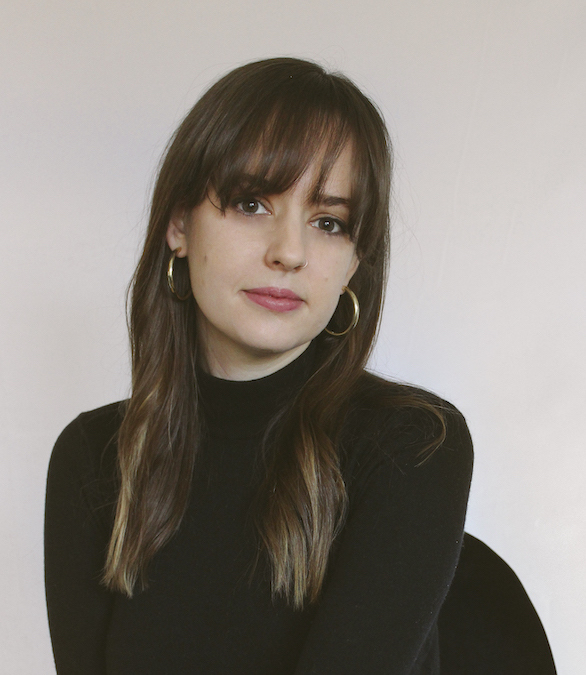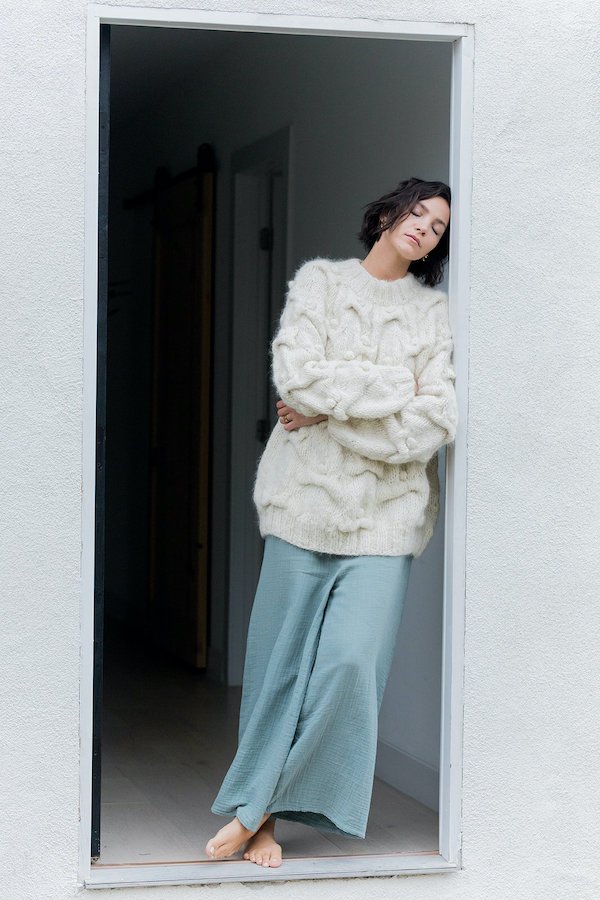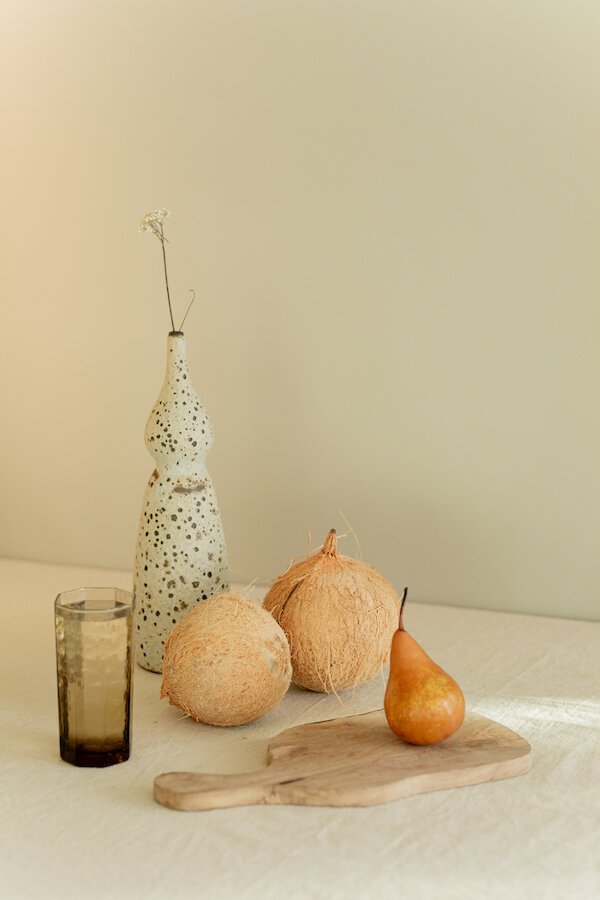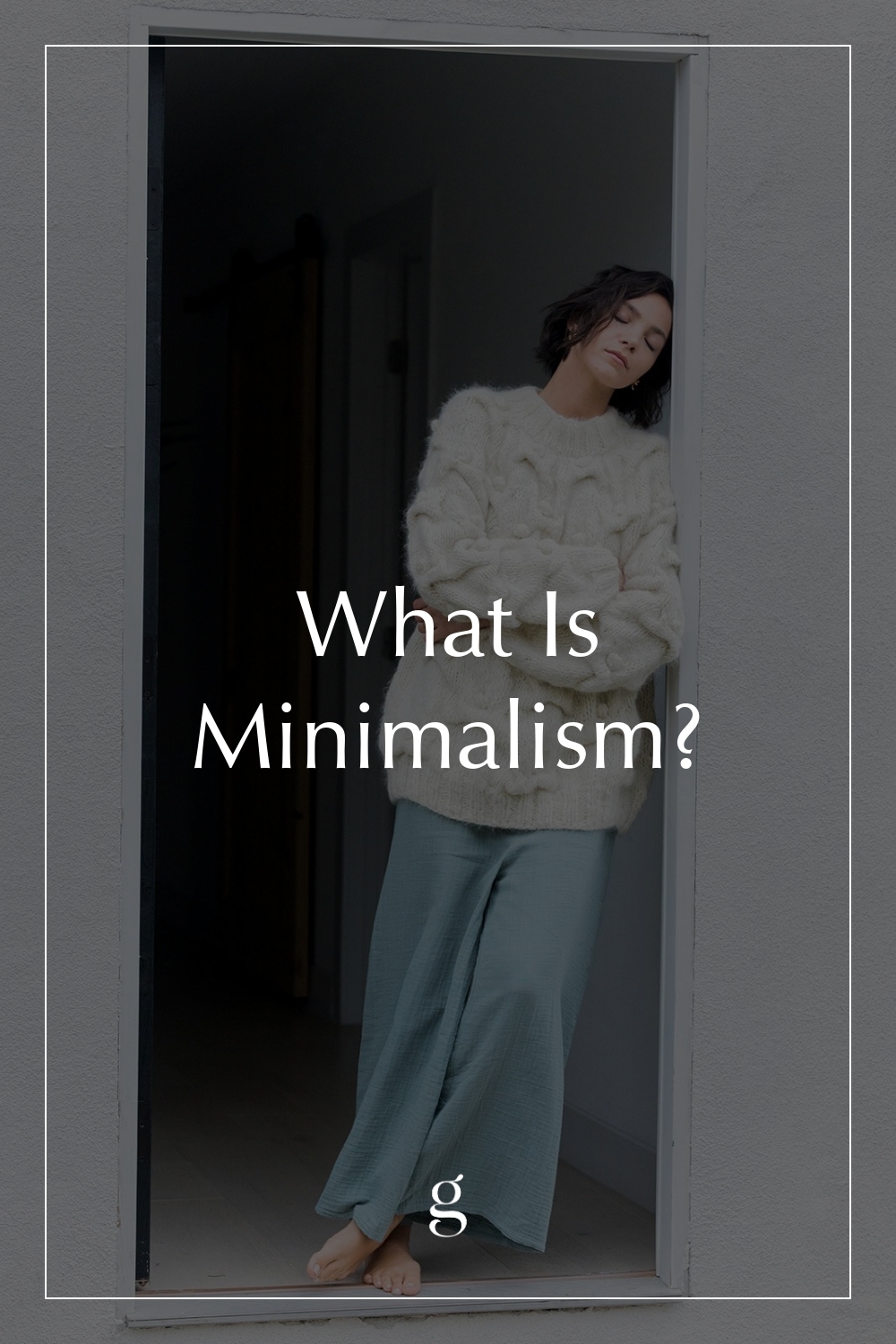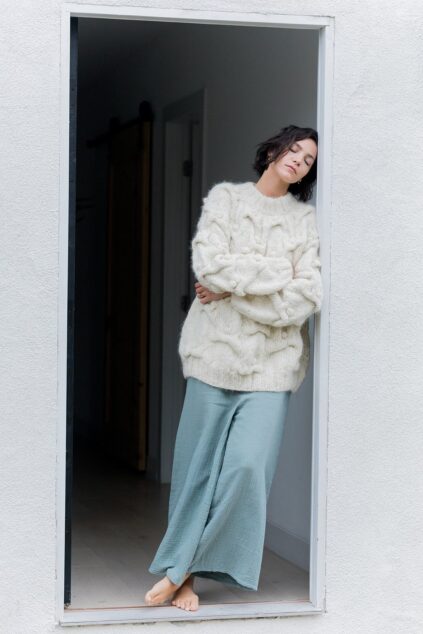
What Is Minimalism?
Less Is More…Right?
Right now, there are more than 20 million posts tagged #minimalism on Instagram. From stark white walls and nearly empty bedrooms to tiny homes and a surprising amount of Apple products, it’s the trend that’s—ironically—cluttered the internet over the last decade.
“Minimalism seeks to challenge consumer habits, believing that we should only invest in essential products that we need.”
And this is especially true in sustainable spaces. Following instructions from what’s been deemed the “gospel of minimalism,” consumers have overhauled everything from their wardrobes to their kitchen pantries. I’ve participated in the trend, too. I’ve spent many weekends clearing out clothing and tossing out memorabilia that I told myself I no longer needed. This is the call of the movement: to clean up and clear out for the badge of “minimalist.”
In the most basic sense, minimalism is the intentional choice to live, well, minimally (i.e., with less stuff). While the term was initially unrelated to consumerism—it was coined by a British art writer in 1965 after he criticized emerging artists for using “manufactured materials and incorporated found objects” in their work—it’s since become synonymous with sparse homes and monochrome closets.
On a more practical level, minimalism seeks to challenge consumer habits, believing that we should only invest in essential products that we need. The movement argues it’s best to simplify our spaces and only keep things we use regularly. One drinking vessel is superior to a cupboard full of cups, mugs, and glasses—or so we’re told.
Not A Movement, But A Mindset
When we look at the Merriam-Webster definition for minimalism, we find that it’s not characterized by ridding one’s material possessions but rather by extreme spareness and simplicity. This leaves me wondering if minimalism might be much more about creating room in our lives than it is about literally clearing rooms in our home.
“For minimalism to be inclusive and accessible, materialism—especially the kind that calls us to exchange what we already have for “ethical” products (read: expensive)—shouldn’t be the central focus.”
While simplifying the objects around us can be helpful, it’s not an essential component to live minimally. If getting rid of clothes works for you, by all means, do so! But if you enjoy the items in your home, or you’re unable to part with your possessions, that’s okay, too. For minimalism to be inclusive and accessible, materialism—especially the kind that calls us to exchange what we already have for “ethical” products (read: expensive)—shouldn’t be the central focus.
In many ways, minimalism is actually a different kind of materialism. It encourages us to better care for what we already own and move away from a disposable mindset. As donated goods often end up in landfills anyhow, a truly minimalist mindset centers on repurposing, reusing, and repairing. It’s not that less is more; it’s that what we currently have is enough.
Of course, it’s always a good idea to slow down consumption, push back against capitalism, and minimize the careless accumulation of material possessions—especially when we have the means and resources to do so. But it’s important to remember that minimalism isn’t about an aesthetic or a hashtag.
At its core, minimalism is an internal posture we take. When we zoom out, we see that the mindset challenges us to think about how we move through the world. We can choose to slow down and embrace simplicity—however that looks at the individual level. Maybe it means minimizing negative thoughts and replacing them with affirmations, or perhaps it’s learning to say “no” to lighten our schedules. The mindset asks us to consider our time, attention, and energy. By simplifying our inner lives, we allow more space for the things that matter most.
When minimalism becomes a mindset as opposed to a movement, we find it helps us declutter our brains and do some internal “tidying.” There, we discover spareness and room to breathe.
But Minimalism Has Class Implications
While all of this sounds virtuous, the minimalist movement has failed to evade critique, and for good reason. In many ways, minimalism is rooted in privilege. Despite its claims to curb consumerism, it promotes a different type of consumption, one that’s more conspicuous and reserved for those with enough money to buy in.
As Chelsea Fagan explains in The Guardian, minimalism implies “a moral upgrade from the life of ‘mindless consumerism,’ and as a bonus, allow[s] you to take on some of the desirable aesthetics and morality of poverty without ever having to be poor.”
“We must consider the difference between choosing to live with less and being affected by poverty. What may be #minimalliving for one person is, in fact, a barrier to someone else.”
Minimalist living may seem admirable when you’ve been privileged enough to grow up with excess. But we must consider the difference between choosing to live with less and being affected by poverty. What may be #minimalliving for one person is, in fact, a barrier to someone else. The idea that we need to “minimize” assumes that we begin with excess and can simply sell or donate what we no longer need.
Moreover, minimalism can glamorize poverty as it suggests simpler living as the most moral choice, with choice being the keyword. Some would argue that the minimalist title is reserved only for those who follow a reverse “rags to riches” storyline. It’s their choice to give up their belongings that makes them moral and virtuous. But this begs the question: What about those who live simply because they have to? Do they get to wear the title as well?
Another critique notes the contrary—that minimalism sometimes shames people who cling to material possessions or refuse to throw things out. By failing to consider those who’ve experienced food, clothing, or housing insecurity, this idea of “stripping back to the basics” ignores how “the basics” remain largely inaccessible. The assumption is that minimalists will always have the means to re-buy what they need. It’s much easier to part with material possessions when you know you can replace them. But for people who’ve experienced displacement, that mentality isn’t necessarily available.
“It’s much easier to part with material possessions when you know you can replace them. But for people who’ve experienced displacement, that mentality isn’t necessarily available.”
This past year was a prime example of how panic and fear can inform our relationships with material possessions. For many of us, the unknown that came with COVID was a new reality, and we found ourselves panic-buying essentials. But for those who’ve experienced disaster or displacement, or for people who’ve migrated from oppressive societies, this mindset is not new—it’s basic survival. You hang onto your stuff because you don’t know if or when you’ll ever be able to get it again.
Finally, not everyone can contemplate (and then execute) the mission of minimalism. The time and resources needed to clean out one’s home and donate or sell unwanted items are lost on those who are more focused on paying bills, taking care of loved ones, or fighting against oppressive systems.
“It’s also worth noting how material objects can often make our daily lives more efficient, allowing us those small moments for rest, relationships, and self-care.”
It’s also worth noting how material objects can often make our daily lives more efficient, allowing us those small moments for rest, relationships, and self-care. For many people, the idea of “slowing down” feels impossible, and sometimes things like extra t-shirts or six baby bottles instead of one are necessary for our mental health. Not everyone has a washer and dryer or can afford to go to the laundromat every week to wash their minimalist wardrobe. And to the parents who can’t imagine cleaning their baby’s bottle after every use—we see you.
Even for those who have time and resources, failing at minimalism can cause shame and anxiety. Similar to the zero-waste movement, there’s often an assumption that to make an impact, you must be “all in.” The bar is set impossibly high.
Resources for Thoughtful Minimalist Living
As we consider if and how minimalism works in our lives, we should think about these critiques and keep watch whenever movements become inaccessible or exclusive. There is nothing inherently good or bad about how much stuff someone has—and individuals must ultimately be the ones to decide if something is serving them, as well as people and the planet.
Minimalism isn’t just about materials or a hashtag. It’s about creating space and finding room to breathe. May we view this movement as nothing more than an invitation to examine the areas of our lives that need a bit of tidying—whether that’s at home, in our relationships, or within ourselves.
To learn more about minimalist living, here are a few of our favorite resources:
Kayti Christian (she/her) is a Senior Editor at The Good Trade. She has a Master’s in Nonfiction Writing from the University of London and is the creator of Feelings Not Aside, a newsletter for sensitive people.
